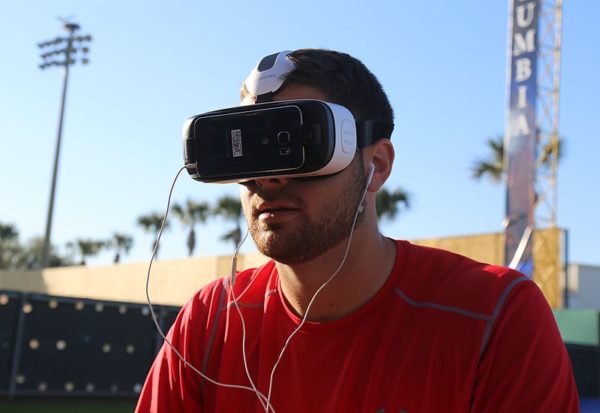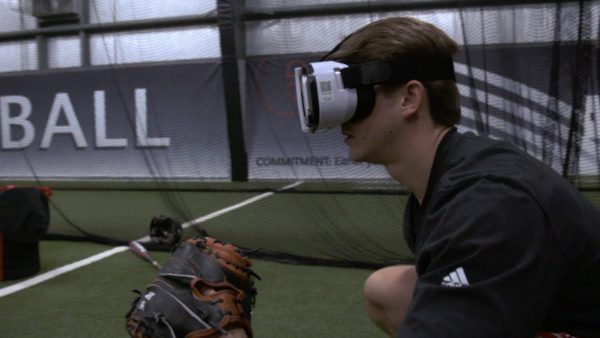Is VR Suitable For Practicing Your Sports?
Most elite athletes would agree that there is no substitute for getting out on the field or the court and practicing their sport. That being said, in competitive arenas across the world athletes and trainers alike are looking for ways to get a competitive edge over their opponents. New technologies and techniques are allowing athletes to take their performance to the next level. Virtual reality is playing a large role in this field.
Wearable technologies make it possible for an athlete’s performance to be monitored in real time. The data that is collected can be analyzed by coaches and athletes alike to improve performance. Hyperbaric chambers can help athletes simulate low oxygen environments with the goal of improving their cardiovascular system.
All of this technology focuses on making the athlete’s body better. But this does little to improve the mental and psychological condition of the athlete. It is commonly understood that success in sports is only 10 percent physical and 90 percent mental. Virtual reality seems to help athletes improve their mental and psychological endurance.
How Virtual Reality Helps
The reason that most people enjoy watching professional sporting events is because they know that what they are getting is more than just a battle of strength or endurance. If the outcome of a sporting event was always determined by which athlete was faster or stronger, they would be very boring. In real life circumstances, the physically superior opponent can be mentally outplayed by a competitor who has lower physical abilities. This is what makes sports exciting and this is where virtual reality training comes into play.
For example, think of the benefits a baseball player receives by taking practice swings against a virtual representation of an opponent who has consistently outplayed him. In these virtual practices the batter can analyze how his opponent throws. The simulation can be adjusted to meet to the level of the player, allowing them to practice at a level that is comfortable and later provides them with data that can be reviewed.
Or think about someone in US combat sports like boxing. Virtual reality makes it possible for them to do speed drills, shadowboxing, and reflex training in a way that they could not do on their own in real life. Virtual reality is completely controllable. This means that any scenario could be tailored to meet the needs of the trainer.
Race car drivers appreciate virtual reality training. It allows them to practice in an immersive environment that does not require an expensive set up. They are able to race without fear of injury and without going through gallons of fuel.
Virtual Reality in Sports Is Quickly Becoming the Norm
The use of virtual reality in sports training is quickly becoming the norm. The National Football League as well as the NBA are using virtual reality to train their players, minimizing the chance of injury. Experts in the field believe that immersive virtual reality training will be the norm in the future.
In addition to allowing for physical training, virtual reality provides a safe environment in which to test an athlete’s decision-making skills. The ability to make accurate decisions under pressure is what separates the best athletes and teams from the rest.
A few years ago, virtual reality was introduced to the NFL as a way to allow players to look at situations that might occur during the game. Players were then asked to determine how a play would play out. Then the player would be shown how the play transpired. Now, virtual reality is developing into an immersive training tool.
The Role of Virtual-Reality in Physical Training and Rehabilitation
Concussions and their long term effects have been a popular topic in recent years. A prime example of this is the NFL. The NFL has received negative press and has come under fire because of what many view as a negligent approach to protecting players from head injuries.
Doctors are looking at ways that they can use virtual reality to improve the accuracy of concussion diagnosis. Scientists believe that they have developed a way that allows medics to use virtual reality to detect subtle changes in athletes who are thought to have had a concussion.
Additionally, virtual reality is being used as a way of allowing players to practice in a high quality virtual session. In the sessions the collisions that they have with other players are only virtual.
But Does It Really Work?
At the end of the day, the question that athletes, coaches, and trainers want answers to is whether or not virtual reality really works in training better athletes. The jury is still out because more information needs to be gathered. However, comments by professional athletes and college athletes that have used virtual reality aided training have been overwhelmingly positive. Researchers are getting to the point now where a broader use of virtual reality technology will lead to increased evaluations of the psychological and mental aspects of its use.
It would be a mistake to see virtual reality training as a panacea for practicing in the real world. The likelihood that virtual reality aided training is going to make someone throw perfectly every time or give defenders the ability to sniff out every play is unlikely.
However, the fact that virtual reality training has taken the place of film on some sports teams supports what researchers believe. 3-D immersive training is more effective than looking at film in 2-D. Virtual training means that players can safely train by themselves at night or indoors without needing help from other players or their coaches. For some players, that extra touch of training will be enough to give them the competitive edge that they want.
Virtual reality training is here and is likely here to stay. It is changing the way that athletes are trained and the way that sports are played. It will not be surprising if in the near future virtual reality technology changes advertising and sports health. Non-athletes may be able to take advantage of the same training materials that their favorite star athletes use to improve their own health and well-being.



















